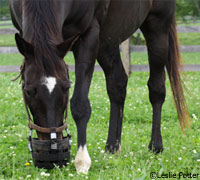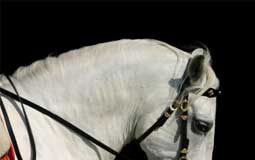 “Now that spring is here, we need to take it slowly when transitioning any of our horses from hay to pasture,” says equine nutritionist Juliet M. Getty, Ph.D. “And for those of us with insulin resistant horses,” she adds, “we may also need a dose of patience.”
“Now that spring is here, we need to take it slowly when transitioning any of our horses from hay to pasture,” says equine nutritionist Juliet M. Getty, Ph.D. “And for those of us with insulin resistant horses,” she adds, “we may also need a dose of patience.”
To be safe, here are the rules:
- When the night temperature is below 40 degrees F, the grass is too high in NSC.
- Once it gets above 40 degrees F at night, the lowest NSC level is before the sun rises.
- The NSC level is highest in late afternoon, after a sunny day.
There is no exact “best time” to turn out your horses on pasture. Generally speaking, it’s safest before dawn, until approximately 10:00 am, and then again at night, starting at around 11:00 pm. Start slowly, offering hay when horses are not on fresh grass.
Finally, test your pasture! Yes, testing is not only for hay. It will take the guesswork out of knowing which times are best.
Further Reading
Spring Grass Safety
Looking for more advice on optimal nutrition for your horse? For more than 20 years, Dr. Juliet Getty has taught and consulted on equine nutrition. Her comprehensive book, Feed Your Horse Like A Horse: Optimizing your horse’s nutrition for a lifetime of vibrant health, is available in hardcover and CD (PDF) through her website or at Amazon.com.






OK, great!
yeah! you really dont want laminites its a killer!
Everyone should know to watch out for new spring grass.
Thanks. I was just wondering about that.